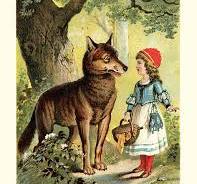Sausages are among the oldest of all processed foods, even mentioned as far back as the 9th century B.C. in the Odyssey. However, the frankfurter was probably only developed in 1487, five years before Christopher Columbus sailed to the new world, in Vienna, Austria, where it was known as a ‘Wiener’.
Other sources claim that the frankfurters originally came from the town of Frankfurt-am-Main, though there is no proof that the ‘hot dog’, as we know it today, had any specific town of origin in Germany. Indeed many forms of sausage are traditional to Germany. The hot dog, however, is the most prevalent in America, where over 7 billion are eaten between Memorial Day and Labor Day every year, according to Eric Mittenthal, president of the National Hot Dog and Sausage Council.

Source: Shutterstock
When Did Hot Dogs Come to America?
The answer to this question is also not completely clear. Hot dogs appeared with the first German immigrants in the late 1840’s. They ate sausages from butcher shops at home and at street fairs and festivals, as well as in beer gardens. The evidence shows that sausages were certainly being sold by street vendors in America by the 1860’s.
The birth of the modern American frankfurter is often attributed to Charles Feltman, a German immigrant and baker by trade, on Coney Island in New York in 1867. He sold his hot dogs from a cart along the sand dunes of Coney Island as a convenience food for bathers. His ‘Coney Island Red Hots’ were an instant success and would later lead to the establishment of Feltman’s Ocean Pavillion in Coney Island, which was at one point known as the largest restaurant in the world, serving 10,000 guests at once. By the 1920’s, Feltman was selling up to 40,000 hot dogs a day.

Source: Feltmans of Coney Island
The Hot Dog Bun
Hot dogs were originally served on paper serviette-like plates, but this proved messy and expensive, since many customers didn’t return the containers. Feltman is credited as the first to develop a hand-sliced, elongated bun, which set the precedent for the modern hot dog bun. One of the Feltman organization bun-slicers was Nathan Handwerker. Handwerker eventually developed his own competing brand of hot dog and bun, still existing today and nationally known as Nathan’s Famous Hot Dogs.
From that point on, hot dogs spread to Chicago, Detroit, Milwaukee and Los Angeles. Each city had its own special toppings, but all had one thing in common; affordability and convenience. By the early 20th Century, hot dogs were a common feature at baseball venues and other spectator sporting events around the country.
Where Did the Name ‘Hot Dog’ Come From?
Hot dogs were first coined ‘red hots’ at some time in the late 1880’s because of the heat of the grill that was used to cook them. The ‘dog’ part is assumed to be a joke, referring the the long length of the sausage, which is reminiscent of a German dachshund. There is no specific evidence to suggest that the term referred to dog meat as an ingredient in the sausage. One source says the word hot dog came from vendors at the New York Polo grounds who, in 1901, were selling the sausages from portable hot water tanks shouting ‘They’re red hot! Get your dachshund sausages while they’re red hot!’

Source: Shutterstock.
Thus is the history of the humble hot dog in America. Guten Appetit!
Sources:
National Hot Dog and Sausage Council (www.meatinstitute.org)

























